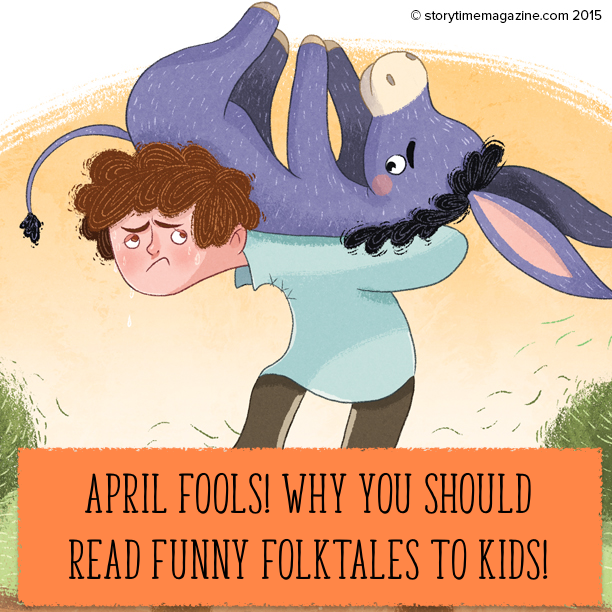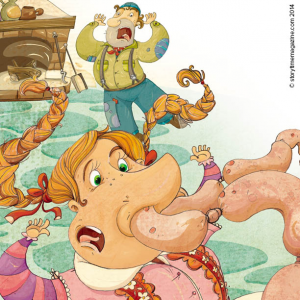 We’ve tackled the subject of story tricksters (and how they can teach us a thing or two), but with April Fools’ Day almost upon us, what of their opposites – folklore’s famous fools? We’ve featured several funny folktales for kids in Storytime mag – and they’re always enormously popular with our readers.
We’ve tackled the subject of story tricksters (and how they can teach us a thing or two), but with April Fools’ Day almost upon us, what of their opposites – folklore’s famous fools? We’ve featured several funny folktales for kids in Storytime mag – and they’re always enormously popular with our readers.
What Is a Folktale Fool?
There are a few types of fools in folktales for kids (and adults):
- The complete numbskull who is just so darned silly or who takes things so literally, it’s laughable (see Storytime Issue 9 for our Lazy Jack story or Issue 7 for The Three Sillies).
- The lucky fool who is granted wishes or helped by animals (see The Three Wishes in Issue 3).
- The wise fool, who is a bit smarter than he or she seems: The Wise Folk of Gotham aren’t as daft as they look in Storytime Issue 18. (It’s been suggested, by the way, that April Fool’s Day began in Gotham.)
Fool folktales are perfect for reading to or with 3 to 9-year-olds, but why do kids love them so? Here are some thoughts:
1. They make us laugh
The most enjoyable thing about fool stories is that they’re funny – and usually not in a bullying or belittling way. They don’t overtly judge or make fun of the fool. They accept the fool for what he or she is, and play for silliness and laughs. What’s more, the humour can sometimes be over-the-top and slapstick. In The Three Wishes, the fool’s wife ends up with a string of sausages stuck to her nose. A big hit with kids!
2. They make us laugh at ourselves
Who hasn’t done something silly or been a complete fool at times? In this age when perfection seems so forced upon us, it’s good to embrace our inner fools and discuss those times when we did something daft. It’s healthy to laugh at ourselves, and fool folktales for kids can be a good trigger for this kind of conversation. As Shakespeare said, “Better a witty fool, then a foolish wit.”
3. They make us feel clever
Some of the things fools get up to in stories are so extremely silly, young readers who are just understanding the practical and logical way to do things are not only fascinated by the fool’s highly relatable innocence and naivety, but also eager to point out what the fool is doing wrong and how they could do it better. Fools make children feel smart! And fool folktales can kickstart thought-provoking questions:
- How could he or she have done it better?
- Why do you think that won’t work?
- Why is it silly?
- What would you advise him or her to do instead?
4. They’re non-threatening
There’s no real peril in fool folktales for kids – no lands to conquer or monsters to defeat. No cruelty to cope with. The story is usually short, simple and easy to follow with an ending that either makes you laugh or smile. Fool folktales make for a pleasant bedtime read – a happy way to end the day.
5. The fool often comes up trumps
In this world, the fool often comes out on top – or at least learns a valuable lesson. Lazy Jack may have let cheese melt on his head, but he found the love of his life; the foolish woodcutter wasted his wishes but gained a fine dinner of sausages; The Wise Folk of Gotham stopped a cruel king ruining their village. (Incidentally, Gotham is a real place with an interesting history.)
Best of all, funny folktales for kids are the ultimate underdog story ‚Äì and we all love an underdog. Once upon a time, they were called ‘droll’. The world definitely needs more drolls and fools (but not the political type – you know who we’re talking about).
Have fun this April Fools’ Day – and do dig out one of our fool folktales to read!






